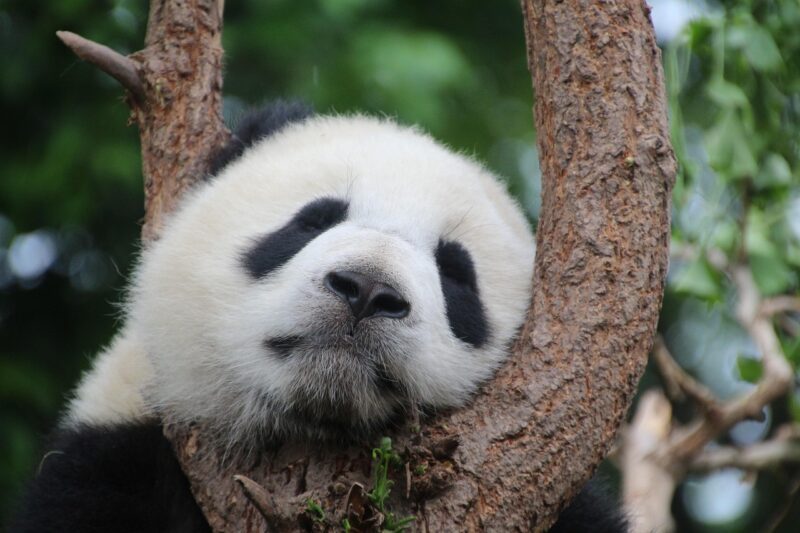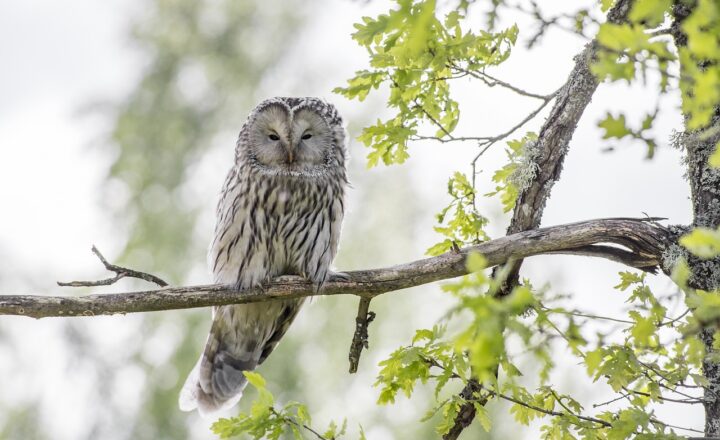The Lifecycle of a Panda: From Birth to Adulthood in the Wild and in Captivity
November 15, 2024

Pandas are one of the most beloved and fascinating animals on the planet. With their distinctive black and white fur, they have captured the hearts of millions around the world. But what do we really know about their lifecycle? In this article, we will explore the stages of a panda’s life, from the moment they are born through to adulthood, both in the wild and in captivity.
1. The Birth of a Panda: Miracle at the Bamboo Grove
Giant pandas are known for their low reproductive rates, which is a significant factor in their status as a vulnerable species. A female panda usually gives birth to one or two cubs at a time after a gestation period of about 135 days. Wildlife experts confirm that in the wild, it is more common for only one cub to survive due to the mother’s limited milk supply, as she can only nurse one panda at a time.
Panda mothers are quite protective and nurturing. After giving birth, a mother panda will hold her cubs close and provide warmth. It’s a remarkable transition, given how vulnerable newborn pandas are at this stage. They weigh only about 100 to 200 grams (approximately 3.5 to 7 ounces) and are born blind.
The maternal instinct in panda mothers is strong. A mother will only care for one cub if she has two, often abandoning the weaker one. In captivity, however, zookeepers can step in and help raise the abandoned cubs, ensuring they receive the necessary care and nutrition for survival.
2. The Early Months: Growth and Development
The first few weeks of a panda’s life are critical for development. Newborn pandas rely entirely on their mothers for warmth and nourishment. The mother will nurse her cub(s) for about six months. During this period, they experience rapid weight gain, developing a thicker layer of fur that helps keep them warm.
At around 3 to 4 months, panda cubs begin to open their eyes, and by 6 months, they start to explore their surroundings. They become more active and playful, engaging in gentle wrestling matches with their siblings, which is vital for their social development.
As they approach the age of 1, they start to eat bamboo, which forms a significant part of their diet. Interestingly, despite being classified as carnivores, adult pandas have evolved to thrive on bamboo, which they consume in large quantities – nearly 26 to 84 pounds per day!
3. The Transition to Adolescence
By the time pandas reach their first birthday, they are becoming more self-sufficient. They continue to depend on their mother for nourishment, but this dependence gradually decreases. In the wild, mothers typically wean their cubs around 18 months old. At this stage, pandas start to test their independence, often venturing farther from their mother to explore their environment.
In the wild, cubs learn essential survival skills from their mothers, including how to find food and avoid predators. In captivity, panda cubs often have less pressure from natural threats, but zookeepers simulate different scenarios to teach them skills necessary for their eventual release into the wild or to thrive in a zoo environment.
<hr />
4. Adulthood: Maturity in the Wild
Pandas reach sexual maturity between the ages of 4 and 6. At this point, the females become capable of breeding, which usually occurs annually during the spring. Mating is a crucial phase in their lifecycle and is often challenging due to the small window of fertility for female pandas.
In the wild, adult pandas lead solitary lives. Each adult has a defined territory which they mark with scent markings to fend off other pandas. Their life expectancy in the wild is typically 15 to 20 years, while those in captivity can live up to 30 years or more thanks to protected environments and veterinary care.
Pandas primarily feed on bamboo but are also known to consume fruits and vegetables. Their dietary habits help shape their habitats and promote ecological balance in their ecosystems. As they spend up to 16 hours a day eating, the importance of their role as bamboo consumers is significant to their environments.
5. The Impact of Captivity on Lifespan and Breeding
While pandas in the wild face challenges like habitat loss and low birth rates, those in captivity experience different circumstances. Zoos and conservation organizations have developed breeding programs that have contributed to the increase in panda populations. However, breeding specific techniques (like artificial insemination) have become essential given the difficulties in natural mating in captivity.
In captivity, pandas have fewer threats from predators and receive regular veterinary check-ups, which contributes to their longer lifespans. The care they receive includes specialized habitats that mimic their natural environment, enriching their lives through various activities that promote natural behaviors.
Captive pandas also engage in social behaviors with other pandas, which provides them opportunities for mental stimulation and social interaction that can be less frequent in the wild.
6. Conservation and the Future of Pandas
Pandas are classified as ‘vulnerable’ by the International Union for Conservation of Nature (IUCN). Conservation efforts are vital to ensure the survival of this iconic species. Organizations have implemented strategies such as:
- Habitat Restoration: Efforts to restore their natural habitat are ongoing, aiming to protect the environments pandas rely on for food and shelter.
- Breeding Programs: Captive breeding programs have seen success in increasing panda populations, with many zoos working collaboratively to exchange genetic material and maintain a diverse gene pool.
- Raising Awareness: Educational campaigns promote awareness about the threats pandas face and how individuals can contribute to their conservation efforts.
As these efforts continue, the future of pandas looks more promising, and they remain a symbol of wildlife conservation worldwide.
Conclusion: Embracing the Life of Pandas
The lifecycle of a panda is a remarkable journey filled with challenges and triumphs. From the moment they are born as tiny, helpless cubs to their transition into strong, solitary adults, pandas showcase resilience and adaptability in both the wild and in captivity.
Their story is not only a testament to nature’s wonders but also a mirror reflecting our responsibility towards wildlife conservation. By understanding their lifecycle and the trials they face, we can all contribute towards ensuring the survival of these beloved creatures for generations to come.








